From dealing with curious spiders to accidentally setting up on a nude beach might be enough to make one question painting outdoors . . .
By Julie McGowan
I am a studio painter and make no apologies. Classically trained in Renaissance portraiture as an undergraduate, life got in the way and I did not touch a paintbrush for 40 years. When I retired to Vermont, I was told that if I wanted to become an artist again, I needed to paint landscapes, something I had never done; so, I looked for classes taught by artists whose work I admired, more in the genre of the 18th- and 19th-century landscape painters.
A few years ago the Bryan Gallery offered a three-day workshop with Andrew Orr, a member of the Guild of Boston Artists, on learning how to paint en plein air. Andrew was a fabulous teacher, but while other students coped with the occasional black fly or gnat on their canvases when painting outdoors, every day I had to deal with a spider dropping from a tree, climbing up the leg of my easel, crawling down my paintbrush. I still have one painting that memorializes my fear of arachnids!
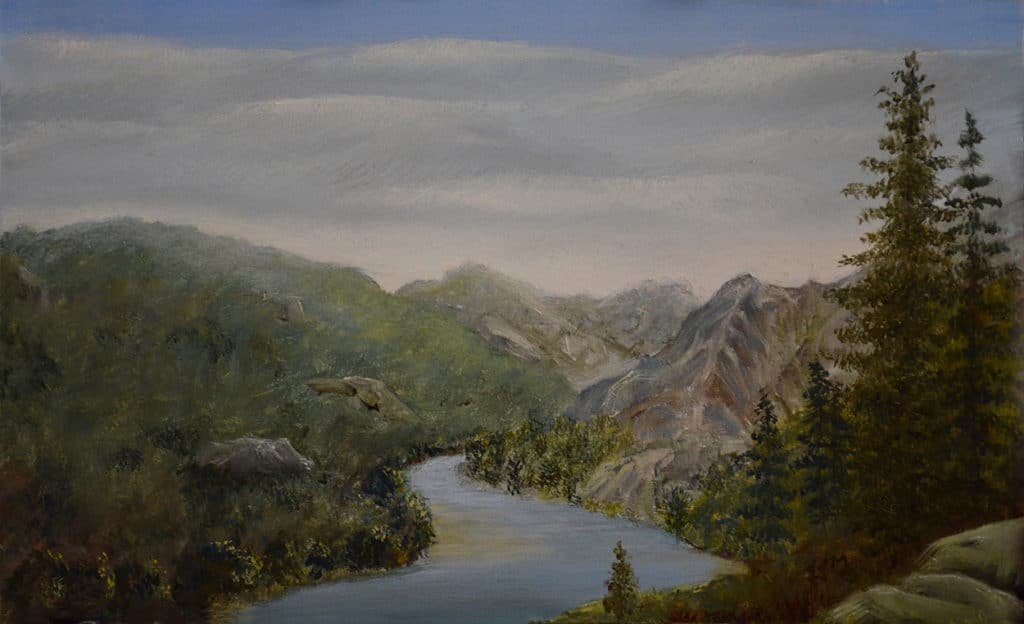
Although I was fairly convinced that I did not want to be a plein air painter, the following year I registered for a class on Hudson River School Painting in New Hampshire, offered through the Grand Central Atelier and taught by Erik Koeppel, also a member of the Boston Guild. This was a six-day class of painting outdoors, and every morning before lugging my painting gear into the woods, I sprayed myself with copious amounts of DEET to ward off mosquitoes and ticks. The others in the class were not as concerned, and, of course, I was the only one in the class of ten to find a tick attached to my leg. While I learned a lot, had found my calling in the Hudson River School style, and my paintings were getting better, my desire to paint outdoors was still not strong.
The following year I heard about the Publishers Invitational Paint New Zealand trip — ten days of painting outside in spectacular scenery. I knew that both Andrew Orr and Erik Koeppel had been featured painters in PleinAir Magazine and because of the chance both to paint in a location I had always wanted to visit and to meet and learn from other artists and those who really understood the contemporary national art environment, I signed up for the trip.
There is no way I can begin to relate the impact that the New Zealand experience had on me and my art. The trip was completely managed, so painting was paramount. It was virtually impossible to find any issues with the plein air painting experience. The landscapes were magnificent; the weather was perfect; the light was unique; and there were almost no insects (except for pesky little black flies that were impervious to all forms of bug repellent).
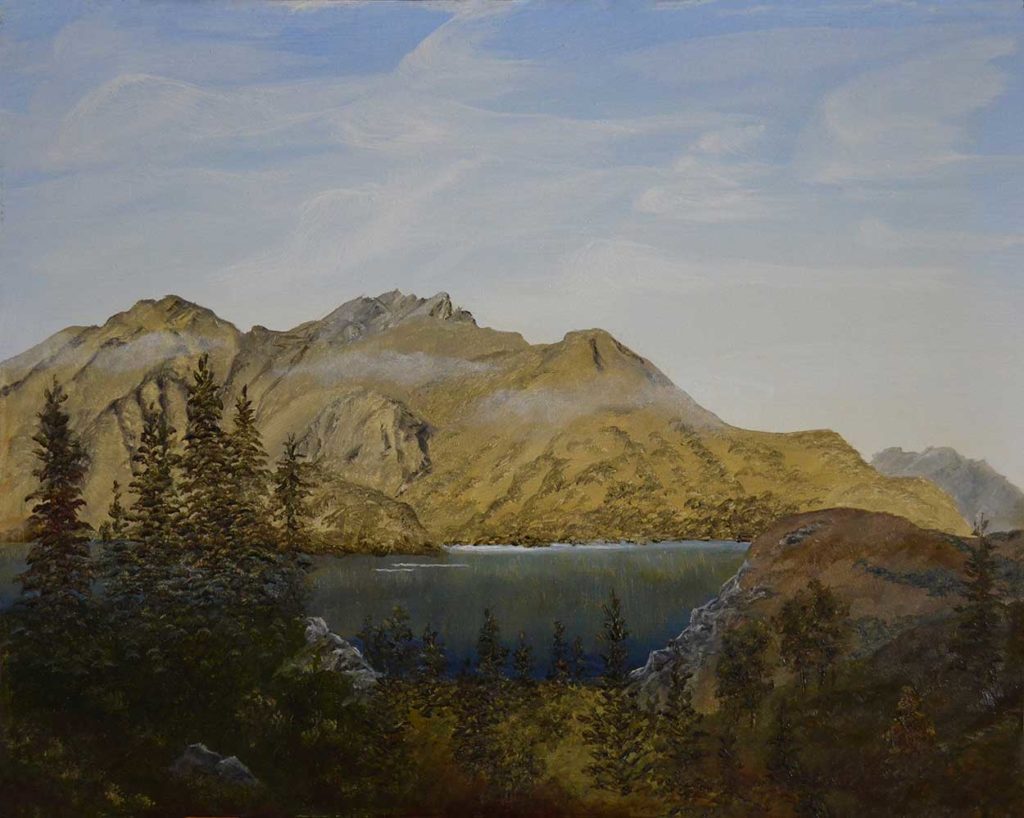
When I returned, I immediately signed up for the Publishers Invitational Adirondack week and was beginning to consider myself as a novice plein air painter. Knowing that the Adirondacks would give me even more confidence for painting outdoors, I also reconnected with a painting friend I had made during the Hudson River School class, and we planned to meet once a year in late summer or early fall for a day of plein air painting. The June week in the Adirondacks was total immersion in the plein air experience and very illuminating, as I met a number of incredible artists who were willing to answer questions and inspire me with their stories and paintings.
After the Adirondacks, I was more than ready for my first solo outing as a plein air painter, meeting Denise, another studio painter, at a point midway between our two residences, which meant a two-and-a-half-hour trip for each of us. I picked the location and, since I had visited a beautiful glacier-formed lake in the winter, I imagined that its beaches would make a lovely spot for plein air painting. We arrived at the deserted boat launch shoreline, and Denise thought that two beaches accessible through the woods over a small hill would give much better views.
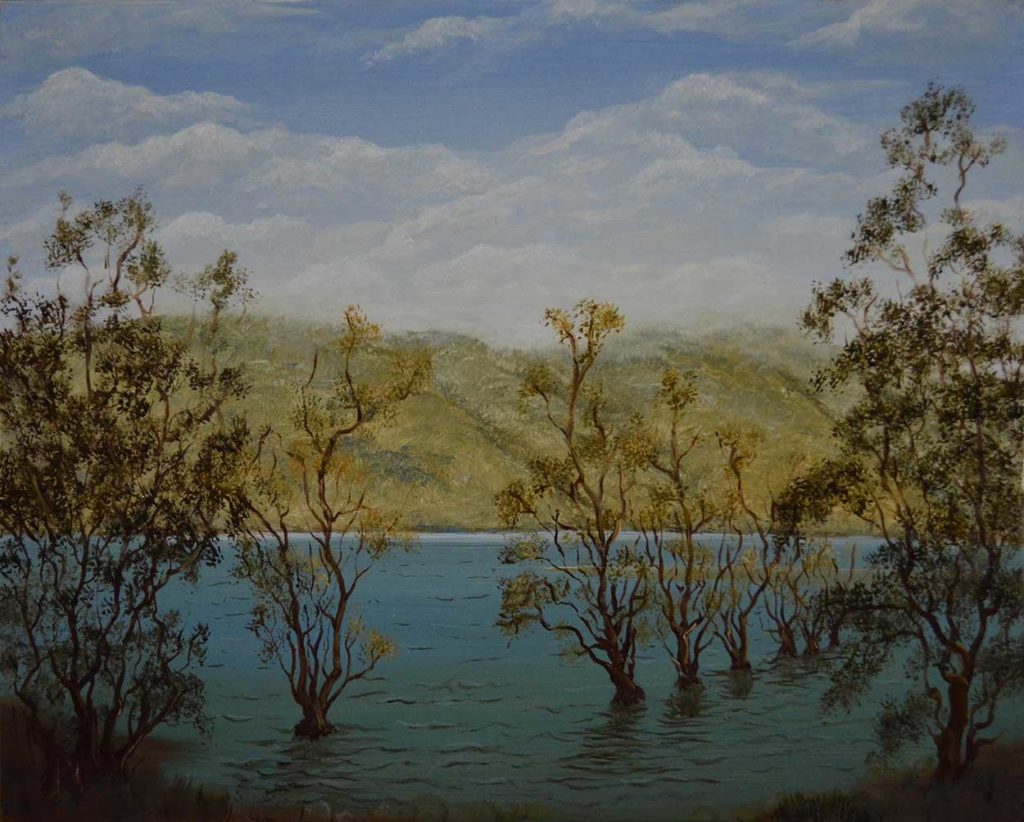
It was late September in Vermont, and although the high would be near 70 midday, it was in the 40s when we started out, and we both wore coats, long pants, long-sleeved shirts, and hats. We trekked to the secluded beaches, selected the farthest one, set up at the water’s edge, and began painting. We had been there for about an hour, and an older couple arrived and settled onto the other beach. About a half hour later, Denise came over and whispered that the elderly gentleman was walking into the water naked. I looked closely and told her that he was actually wearing a white bathing suit. We returned our focus to painting and the lovely fall colors running down to the water.
After several more hours, we were thinking about packing up, and a man walked up to comment on my painting. Although it was still chilly, I noticed he was not wearing a shirt — or any clothing whatsoever. Denise began looking around and noticed that our initially secluded plein air beach had many new arrivals, virtually all of whom had taken off their clothes. We were painting on an unposted nude beach!
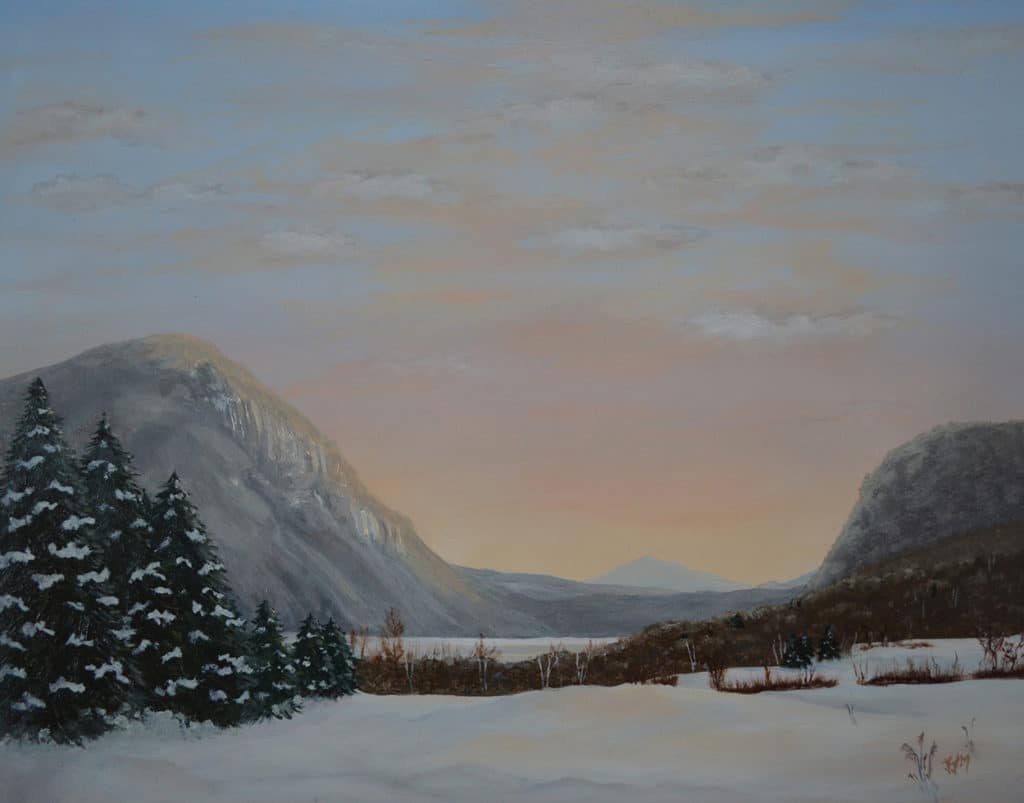
I am still primarily a studio painter and make no apologies. But plein air painting has tested me in ways I never thought possible, and I feel I am a better artist because of it. Asher B. Durand, in his letters to prospective students published in The Crayon, a 19th-century art magazine, said to seek the “Studio of Nature . . . Yes, go first to Nature to learn to paint landscape.” It was hard initially to go beyond my safety zone in the studio and then to move from detailed sketching outside to setting up an easel and painting; but the results have been gratifying. Studio painting does not offer the unanticipated, unique, and exciting challenges offered by painting outside in new and unexplored locations. Yes, I am looking forward to the next adventure, and yes, I do really want to paint en plein air.
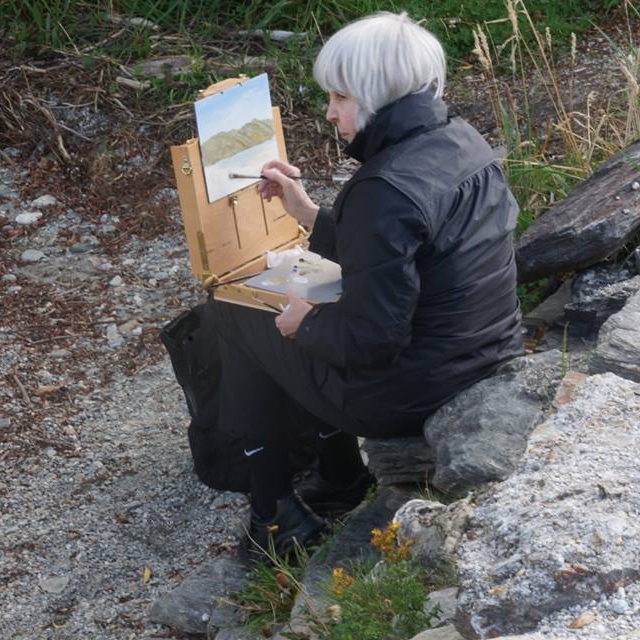
And browse more free articles here at OutdoorPainter.com

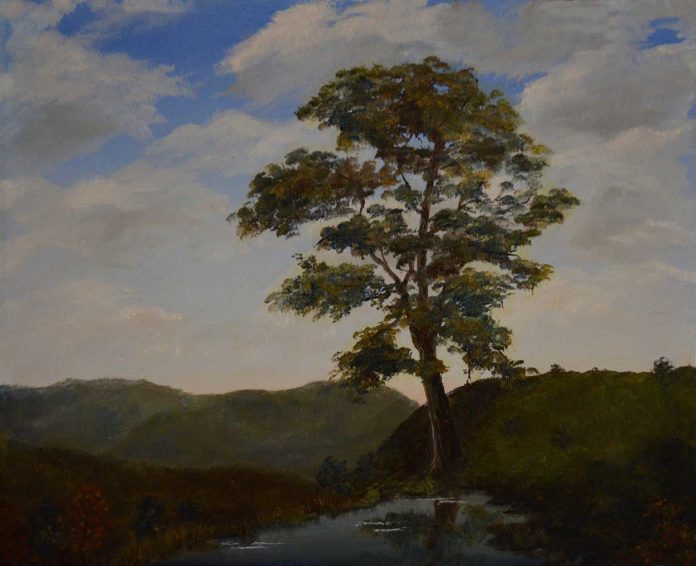



Thank you so much for sharing your story and journey. I too have been on a similar sojourn in an almost “love hate” relationship with Plein Air painting. There are many times when it is such a spiritual and exhilarating experience that I find myself lost in its thrill for hours. There are other times of near abject misery and despondency when I wonder if I will ever learn how to do this and if it is even worth the effort. I often feel guilty that I don’t get out and paint more and easily find excuses to not do so. Yet, when I am able to make myself get out and paint, especially in an immersive atmosphere of several days in a row, I do fall in love with it all over again and can see progress in my work. It has helped me immensely when I heard a well known successful artist admit recently that he felt that studio painting and Plein Air painting were two very different disciplines and sets of skills. And that Plein Air painting is not necessarily about producing good or pretty paintings, but more about practice and learning how to “see.” When I remind myself of this and “cut myself some slack” I usually enjoy it much more and have much better results. For now, I just keep trying and am grateful I have the time and health to do so.
Thank you for sharing your experiences. I guess the expression, misery likes company is true! It helps to know that other painters have frusturating plein air experiences too. It also helps to bring a nice friend along to paint with you. It takes the edge off the challenges and brings a smile to the day.
Happy Painting!
At least as a “studio painter” your chances of running into a nude man (or woman) are pretty remote – unless your painting nudes. I’ve been a plein air painter for about 3 years. It truly is a love-hate relationship. Just keep trying. You’ll get there eventually. Good luck.
This article was a fun and enlightening read! We’ve all started somewhere! I especially enjoyed the story of the nude beach, as I am a nudist (or really, a naturist)! I’ve actually done plein air painting at a nude beach and even published an article about it! I’ve also painted sans raiment when painting in remote locations, though I always have a pair of shorts handy just in case. I can think of no better way to become truly in touch with nature than painting “au naturel”. One can truly be a part of the landscape and FEEL the wind, sun, and breeze-which I hope I capture in my work. I know it’s not for everyone, but perhaps you’d like to try it sometime! Trust me, getting out in nature, in your natural state can be inspiring!